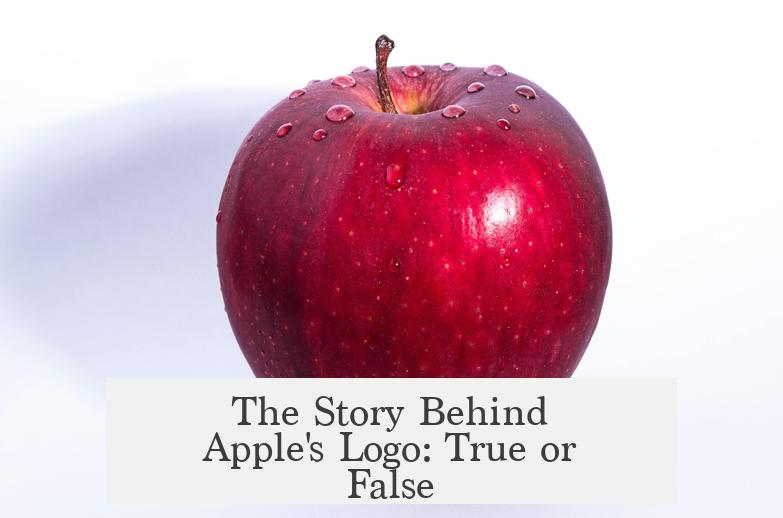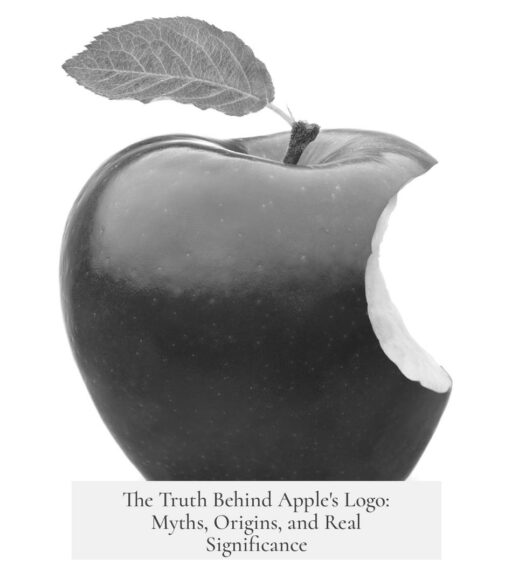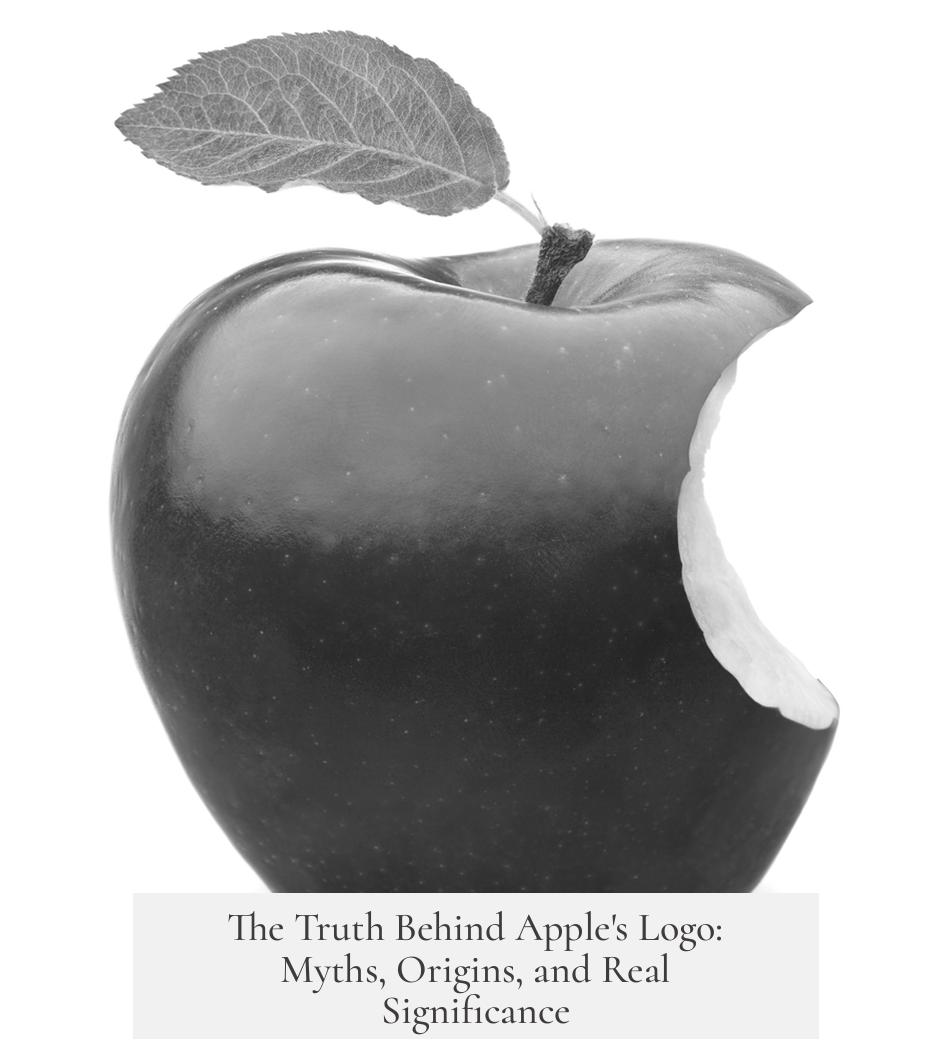The story behind Apple’s logo is often misunderstood. While many claim the design symbolizes the biblical story of Adam and Eve or pays homage to Alan Turing, these ideas are largely myths. Steve Jobs himself denied the popular legend about the logo’s meaning, clarifying that the real story differs.
Steve Jobs was once asked about the rumored biblical references linked to the logo—a bitten apple symbolizing knowledge or temptation. Jobs responded that he wished the story were true but confirmed it was not. This clarifies that much of what circulates in popular culture about the logo’s symbolism is false.
The bite in the Apple logo has a practical design purpose. Designers added it to ensure the apple shape remains recognizable when reproduced at small sizes. Without the bite, the fruit could resemble a cherry or other round fruit. This choice aims to improve scalability and clarity across various media.
Another element often mentioned is the logo’s inspiration from Sir Isaac Newton, who is famously associated with the falling apple story in physics and gravity. Apple’s early branding drew on this historical theme, as shown in the original logo artwork, reflecting a connection to discovery and innovation.
- The original Apple ads used the phrase “Byte into an Apple,” creatively linking technology (byte) and fruit.
- The Apple 1 computer originally sold for $666.66, a curious numeric detail often noted by enthusiasts.
Some speculative or humorous interpretations emerged, such as Steve Jobs being likened to the snake in the Garden of Eden, symbolizing a second chance for humanity through technology. These interpretations remain purely symbolic and speculative without factual basis.
Overall, the Apple logo’s story centers on design clarity, a historical nod to Newton, and clever marketing rather than any deep biblical or symbolic religious meaning.
- Steve Jobs denied biblical symbolism claims about the logo.
- The bite improves logo recognition at small sizes.
- Newton’s apple inspired the original concept.
- Marketing used “byte” wordplay linking tech and fruit.
- Humorous interpretations exist but lack factual support.
The Story Behind Apple’s Logo: True or False?

What’s the real story behind Apple’s logo? Let’s cut through the tech fog and rumor jungle right now: the popular tale about the apple logo’s bite being a nod to Alan Turing’s tragic story is actually false. Shocked? You’re not alone!
For years, a juicy myth has circulated that the bite in the Apple logo symbolizes a tribute to Alan Turing, the computing pioneer who tragically died after biting into a cyanide-laced apple. While poetic and captivating, Steve Jobs himself disproved this heartstring-tugging tale in an interview. When asked if that story were true, he admitted he wished it were, but sadly, it wasn’t.
Steve Jobs’ Official Denial
Job’s denial makes this one clear: the iconic Apple logo bite wasn’t a memorial for Turing. It’s a good reminder that *sometimes, great stories sound better than the truth* — but the real story can be just as interesting. Jobs had a habit of keeping Apple’s origins based on innovation and simplicity, not elaborate symbolism.
So, if the tribute theory doesn’t hold water, why is there a bite at all?
The Practical Reason Behind the Bite
The bite in the apple? It’s not just for show. Designers often face a tricky challenge: logos need to look clear at any size, whether on a giant billboard or a tiny icon on your phone.
According to a design class insight, the bite was added because without it, the apple could be confused with a cherry or some other round fruit when scaled down. Imagine trying to figure out the brand on a minuscule app icon—ambiguity is the enemy of good branding.
This practicality-driven design tweak makes the logo instantly recognizable. It’s a clever way to maintain distinctiveness, helping Apple’s brand stand out worldwide no matter the size or medium.
Newton’s Apple: The Original Inspiration
Before the clean, modern bitten apple, there was a more intricate concept. The original inspiration reportedly comes from the legendary story of Isaac Newton and his falling apple, symbolizing discovery and enlightenment.
This connection aligns with Apple’s philosophy of innovation and revolutionizing technology, like Newton breaking the laws of physics open with gravity. The first Apple logo, designed by Ronald Wayne, depicted Newton sitting under a tree. But that logo was replaced by the simpler, now-famous apple with a bite.
So instead of a tribute to cryptic history or tricky symbolism, the logo roots itself in discovery—fitting for a company touting itself as an innovator.
Byte Into Apple: Clever Wordplay and Marketing

The bite also plays perfectly with Apple’s early marketing wordplay. Early Apple ads encouraged consumers to “Byte into an Apple,” cleverly linking the computing term “byte” with the fruit. This pun gave the logo a dual meaning: a literal bite and a symbolic byte of information or technology.
By the way, the original Apple 1 computer debuted at $666.66, a quirky detail that has stirred speculation and humor over the years—though it was just Steve Wozniak’s mathematical oddity rather than some secret tech cabal conspiracy.
More Speculations: The Garden of Eden Theory
Now for an amusing twist in the tale—the tongue-in-cheek theory that Steve Jobs was the snake from the Garden of Eden, tempting humanity with a second chance at that “forbidden fruit.”
This idea portrays Jobs and Apple as the rebel offering knowledge and power through technology, much like the biblical serpent offering enlightenment. Although clearly a metaphor and not a fact, it’s an entertaining narrative that adds a splash of symbolism to Apple’s mystique.
Does this mean every Apple fan should start carrying a snake plush toy? Probably not. But it underlines how deeply Apple’s brand resonates with cultural and symbolic references beyond just a fruit.
Why Does the Apple Logo Matter?
Understanding the real story helps us appreciate the art of logo design and branding strategy. The Apple logo isn’t just a fruit. It’s a symbol designed for clarity, memorability, and subtle nods to innovation and computing culture.
For entrepreneurs and marketers, Apple’s logo story provides valuable lessons:
- Keep your design simple but meaningful.
- Test it across all sizes and formats.
- Use clever wordplay to boost brand recall.
- Don’t overcomplicate with forced symbolism.
Apple’s logo shows that sometimes, practical design beats dramatic myth-making—and that simplicity paired with clever tweaks can create an icon for generations.
In Conclusion: The Bite Is Real, But the Myth Isn’t
The next time you see the bitten apple on your device, remember: it’s a smart design choice rather than an elaborate homage to computing history or biblical tales. This logo came from a blend of practical graphic design considerations and nods to Newton’s spark of discovery, not hidden memorials or secret allegories.
So is the story behind Apple’s logo true or false? The answer is a nuanced TRUE—in its practical, design-driven essence—and FALSE—in its elaborate legends. Quite fitting for a company that thrives on clear innovation and creativity.
What’s your favorite Apple logo myth, and did learning the truth change how you see this iconic symbol?
Why does the Apple logo have a bite taken out of it?
The bite was added to make the apple shape clear when the logo is printed small. Without the bite, it might look like another fruit, such as a cherry.
Is the story about the Apple logo representing Alan Turing true?
No. Steve Jobs denied that story. He said he wished it was true, but it isn’t the real reason behind the logo.
What inspired the original Apple logo design?
Newton was the original inspiration behind Apple’s logo. The logo was a tribute to him rather than other popular interpretations.
What does the wordplay “Byte into an Apple” mean in Apple’s history?
It was a marketing pun used when Apple started. It played on the word “byte,” connecting computer technology with the fruit.
Is the idea that Steve Jobs was the snake from the Garden of Eden linked to Apple’s logo story?
This idea is a humorous speculation. It is not part of the real story behind Apple’s logo but rather a playful interpretation.




